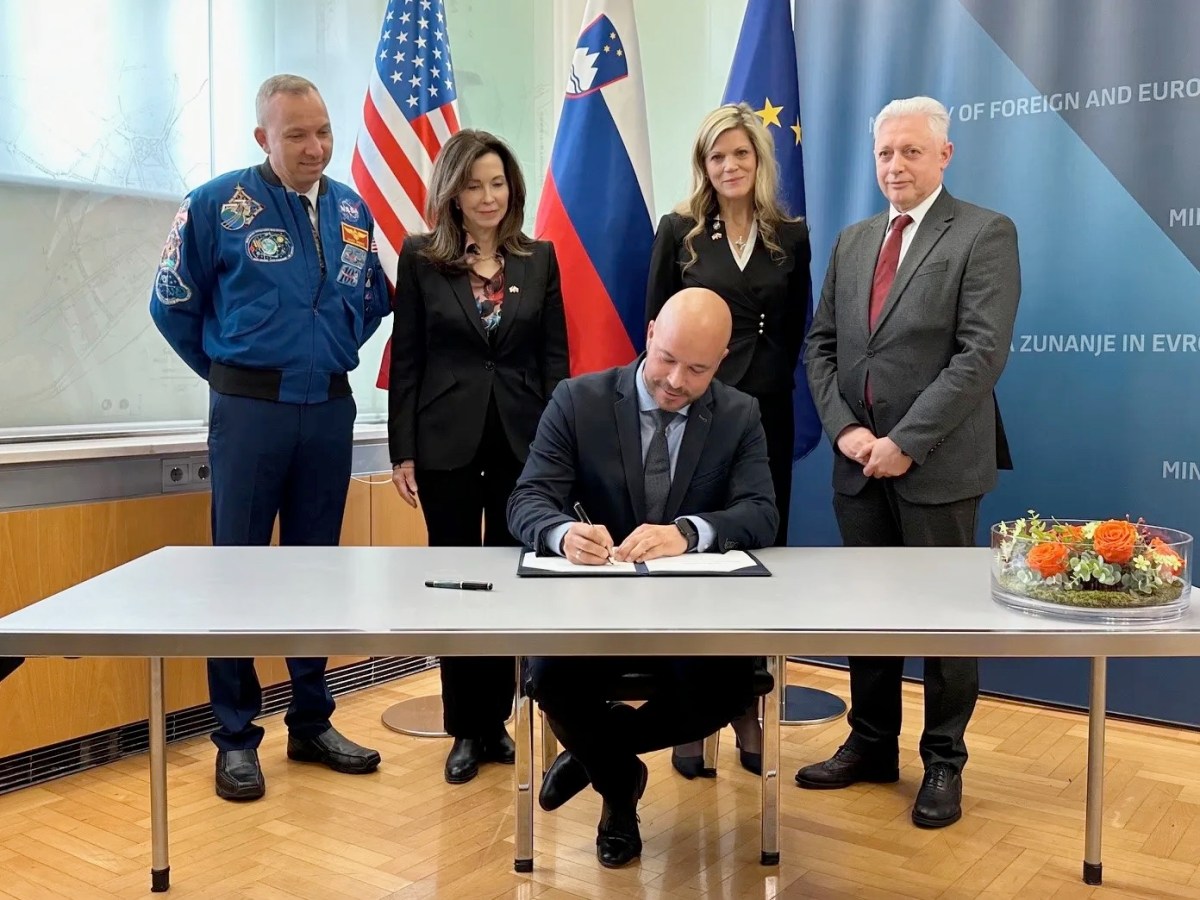On April 19, NASA issued a press release announcing that Slovenia had signed the Artemis Accords. Following quickly on the heels of accession by Switzerland (April 15) and Sweden (April 16), this brings the total number of signatories to the United States-led political commitment in space to a whopping 39 nations. Largely ignored by all but the media outlets devoted to space activities, these modest signing ceremonies play a tremendously significant role in the new 21st century space race.
Red Moon Rising: How America Will Beat China on the Final Frontier, a new book penned by Greg Autry and Peter Navarro puts the stakes of Space Race 2.0 in sharp focus — and they’re a lot higher than national prestige and bragging rights. At the heart of this race lies China’s palpable ambition, articulated by Xi Jinping, to ascend to a dominant position in space by 2045. The significance of this ambition cannot be overstated. As the adage goes, “possession is nine-tenths of the law.” Under international law, no sovereign nation may claim territory in space, nevertheless mere presence will translate into superior bargaining power and influence.
Contrary to its portrayal in science fiction, space is not a lawless wonderland. There are four widely-ratified international treaties that govern space activities. They are broadly worded, suffer from internal inconsistencies and glaring gaps and are subject to varied interpretations. For example, while binding international law states that the exploration and use of outer space shall be free for exploration and use by all, it also states that a nation may not claim territory in space by any means. This is balanced by the requirement that activities in space be conducted with due regard for the corresponding interests of others. There is no legal definition for “due regard.” As such, there exists a potentially serious first-mover advantage which must be understood and taken into consideration as human society’s reliance on the utilization of space continues.
Autry and Navarro clearly spell out the many ways space exploration has benefited humanity. Satellites on orbit gather monumental amounts of information about our home, and have helped us in everything from tracking environmental challenges to managing crops and avoiding disasters. The future holds even more promise as we look towards in-space manufacturing of pharmaceuticals and other products that are easier to develop in microgravity than on Earth.
The authors also offer a stark warning: The Outer Space Treaty of 1967 expresses a desire that space shall be used always and only for peaceful purposes; but it does not mandate that. Thus, as Autry and Navarro detail, President Xi Jinping’s Communist Party has developed space capabilities that could wreak disastrous havoc here on Earth. The book’s introduction reminds readers that Chinese strategist Wang Hucheng has openly shared the Chinese acknowledgment of “America’s soft ribs.”
“For countries that can never win a war with the United States by using the method of tanks and planes,” he says, “attacking the U.S. space system may be an irresistible and most tempting choice.”
China is threatening to disable U.S. space capabilities while they are also building their own space-enabled offensive infrastructure.
As frightening as electromagnetic pulse and laser weaponry may seem, the more pragmatic threat is far more alarming. The stakes are literally access to the vast resources of the universe. In the 1960s, the winner of the space race claimed bragging rights of technological superiority. In a chapter aptly titled “The Cornucopia of the Heavens, Space Resources,” Autry and Navarro speak to the many opportunities for economic growth that are supported by space assets — even by merely having a presence in orbit or beyond. But the real prize is beyond. Autry and Navarro are not being hyperbolic when they write that humanity stands on a monumental tipping point. People living today might be among the first to migrate off Earth and never return. Where will they go? To the moon, certainly, but there is a great expanse beyond that to discover and explore. We will need to use the moon as a proving ground. We can learn how to extract resources, including water, from the lunar surface. We will build installations and habitats using resources found on the moon. And the first nation to build a permanent off-world presence will likely set the terms of governance.
Space Race 2.0 is about building the framework for the future. Having a permanent human presence on another celestial body brings with it substantial authority. The first mover will wield substantial influence over access to celestial resources and the interpretation of crucial legal principles like due regard. This is a tantalizing prize for any country that seeks to become the dominant space power. Let us hope it will be one that prizes human dignity, diversity and freedom.
Despite these challenges, Red Moon Rising is optimistic. It serves as a clarion call to action, urging stakeholders to heed the imperatives of Space Race 2.0 and actively participate in shaping a future where humanity’s presence extends beyond the confines of Earth. Read Red Moon Rising and join me in celebrating every new signatory to the Artemis Accords.
Michelle L.D. Hanlon is the Executive Director of the Center for Air and Space Law at the University of Mississippi School of Law and co-founder of For All Moonkind.
